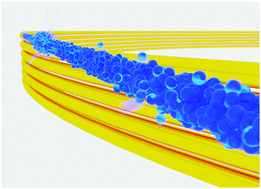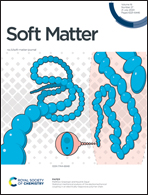Capillary RheoSANS: measuring the rheology and nanostructure of complex fluids at high shear rates†
Abstract
Complex fluids containing micelles, proteins, polymers and inorganic nanoparticles are often processed and used in high shear environments that can lead to structural changes at the nanoscale. Here, capillary rheometry is combined with small-angle neutron scattering (SANS) to simultaneously measure the viscosity and nanostructure of model complex fluids at industrially-relevant high shear rates. Capillary RheoSANS (CRSANS) uses pressure-driven flow through a long, flexible, silica capillary to generate wall shear rates up to 106 s−1 and measure pressure drops up to 500 bar. Sample volumes as small as 2 mL are required, which allow for measurement of supply-limited biological and deuterated materials. The device design, rheology and scattering methodologies, and broad sample capabilities are demonstrated by measuring a variety of model systems including silica nanoparticles, NIST monoclonal antibodies, and surfactant worm-like micelles. For a shear-thinning suspension of worm-like micelles, CRSANS measurements are in good agreement with traditional RheoSANS measurements. Collectively, these techniques provide insight into relationships between nanostructure and steady-shear viscosity over eight orders of magnitude in shear rate. Overall, CRSANS expands the capabilities of traditional RheoSANS instruments toward higher shear rates, enabling in situ structural measurements of soft materials at shear rates relevant to extrusion, coating, lubrication, and spraying applications.



 Please wait while we load your content...
Please wait while we load your content...
